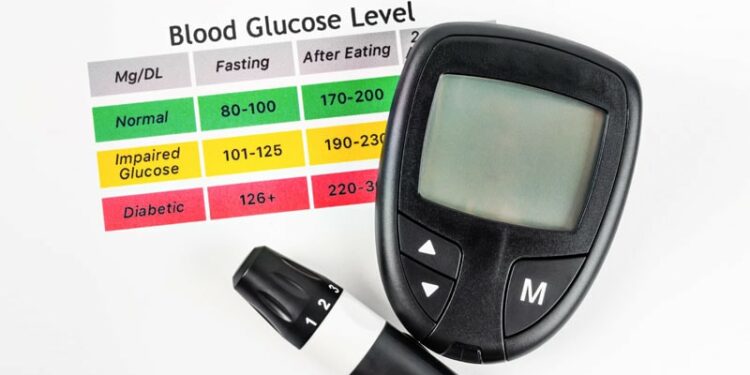TOPLINE:
Fasting plasma glucose levels outside 80-94 mg/dL, male sex, older age, and abnormal body mass index (BMI) categories all contribute to diabetes development, with additive effects.
METHODOLOGY:
- Understanding the interplay between the risk factors for diabetes and its development is crucial for developing individual, practice, and population-level prevention strategies.
- Researchers evaluated the risk for incident diabetes in 44,992 participants (mean age, 43.7 years; 57.8% women; mean BMI, 28.9) who had at least two fasting plasma glucose measurements between January 2005 and December 2017; participants were followed for a median of 6.8 years.
- Diabetes diagnosis was defined as having a fasting plasma glucose level ≥ 126 mg/dL.
- Those who met the diagnostic criteria for diabetes on or before their first fasting plasma glucose measurement were excluded.
- The risk for diabetes was assessed on the basis of six categories of baseline BMI (underweight; normal weight; overweight; and class I, II, and III obesity), nine categories of initial fasting plasma glucose levels ranging from
TAKEAWAY:
- Over the median follow-up period, 8.6% of participants developed diabetes, with a Kaplan-Meier 10-year cumulative risk of 12.8% (95% CI, 12.4%-13.2%).
- Compared with a reference fasting plasma glucose level (80-94 mg/dL), both low fasting plasma glucose (
- Male sex demonstrated a higher risk for diabetes than female sex (HR, 1.31; 95% CI, 1.22-1.40); older age (≥ 60 years) also showed a higher risk than younger age (HR, 1.97; 95% CI, 1.71-2.28).
- BMI variations from the normal range (18.5-24.9) increased the risk for diabetes, with both underweight (
IN PRACTICE:
“This risk estimate allows for identification of individuals with the highest risk and can facilitate options for tailored intervention,” the authors wrote.
SOURCE:
This study was led by Aoife M. Egan, MBBCh, PhD, Division of Endocrinology, Diabetes and Metabolism, Mayo Clinic, Rochester, Minnesota. It was published online on January 23, 2025, in JAMA Network Open.
LIMITATIONS:
The study population was less racially and ethnically diverse and more highly educated than the overall US population. The retrospective design required participants to have at least one follow-up fasting plasma glucose test, potentially introducing selection bias. Further validation of this risk categorization tool is needed for different populations. This study omitted the second confirmatory diabetes test for asymptomatic individuals, which may have led to an overestimation of diabetes prevalence.
DISCLOSURES:
This study received support through the Mayo Clinic Robert and Elizabeth Strickland Career Development Award in Endocrinology, Metabolism, Diabetes, and Nutrition and awards from the National Institutes of Health and other sources. One author reported receiving grants from the National Institutes of Health, and another author reported receiving grants and personal fees from some pharmaceutical companies.
This article was created using several editorial tools, including AI, as part of the process. Human editors reviewed this content before publication.
Source link : https://www.medscape.com/viewarticle/normal-fasting-glucose-doesnt-guarantee-diabetes-prevention-2025a10001nr?src=rss
Author :
Publish date : 2025-01-23 16:00:00
Copyright for syndicated content belongs to the linked Source.














